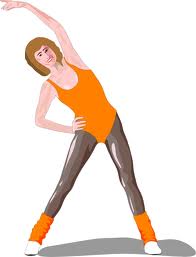|
Choose an exercise routine to fit your lifestyle
I am sure you have thought about getting some exercise, but you are not sure which routine to choose that will suit your specific needs. Well, stay with me, while we investigate some options - and let's have some fun while doing it! Let's start by dividing our workouts into two main categories, namely isometric exercises and dynamic exercises. The Wikipedia definition/comparison reads as follows: Isometric exercise or isometrics are a type of strength training in which the joint angle and muscle length do not change during contraction (compared to concentric or eccentric contractions, called dynamic/isotonic movements). Isometrics are done in static positions, rather than being dynamic through a range of motion. Isometric exercise is a form of exercise involving the static contraction of a muscle without any visible movement in the angle of the joint. This is reflected in the name; the term "isometric" combines Greek the prefixes "iso" (same) with "metric" (distance), meaning that in these exercises the B length of the muscle and the angle of the joint do not change, though contraction strength may be varied. This is in contrast to isotonic contractions, in which the contraction strength does not change, though the muscle length and joint angle do. Comparison with dynamic exercises: Isometric exercises have some differences in training effect as compared to dynamic exercises. While isometric training increases strength at the specific joint angles of the exercises performed and additional joint angles to a lesser extent, dynamic exercises increase strength throughout the full range of motion. Generally speaking, people who train isometrically don't train through a full range of motion, as the strength gained at the training joint angle is where they require it. While dynamic exercises are slightly better than isometric exercises at enhancing the twitch force of a muscle, isometrics are significantly better than dynamic exercises at increasing maximal strength at the joint angle. Flexibility may be increased when isometrics are performed at joint range of motion extremes. These isometric contractions recruit muscle fibers that are often neglected in some dynamic exercises. For example, gymnasts are extremely strong at great ranges of motion through the practice of isometric holds.
Bottom line: we need both types of exercise to keep our muscles and bones in top shape! My personal experience with the more isometric type of exercise: I had numerous accidents during the course of my life, I am therefore not as mobile as I was when I was young and an inspired ballet dancer! I have found a wonderful muscle-strengthening exercise routine, which I have religiously followed three times per week for the past three years. This is a self-help programme, no trainer needed, but what amazing results... If you are, like me, somewhat physically restricted, this is the program for you! Click on the banner at the bottom of the page for the most amazing back and muscle-strenghtening exercises ever.
On the other hand, if you are the more energetic and movement-driven type of person, the link at the bottome of the page will take you to a website that will help you find a tailormade exercise program to suit your needs.
There are many programs available on the internet or at your local gym. There are so many sports clubs to join for improving your fitness (and your social life!). What are the criteria, then, for choosing your preferred activity or sport? Some pointers: * Age * Weight * Mobility * Career, i.e. time available * Family commitments * Personal preferences: what I LIKE, and what not * Location - where I live * Transport available * Affordability
OK then, what are we waiting for? Let's do it!
Click on this banner for the most amazing isometric routine:
|






